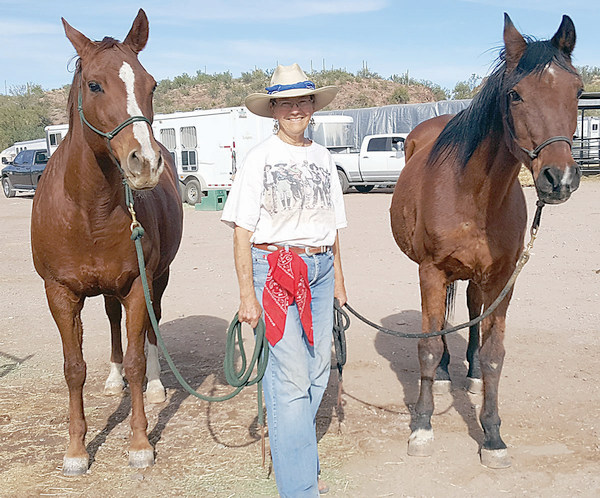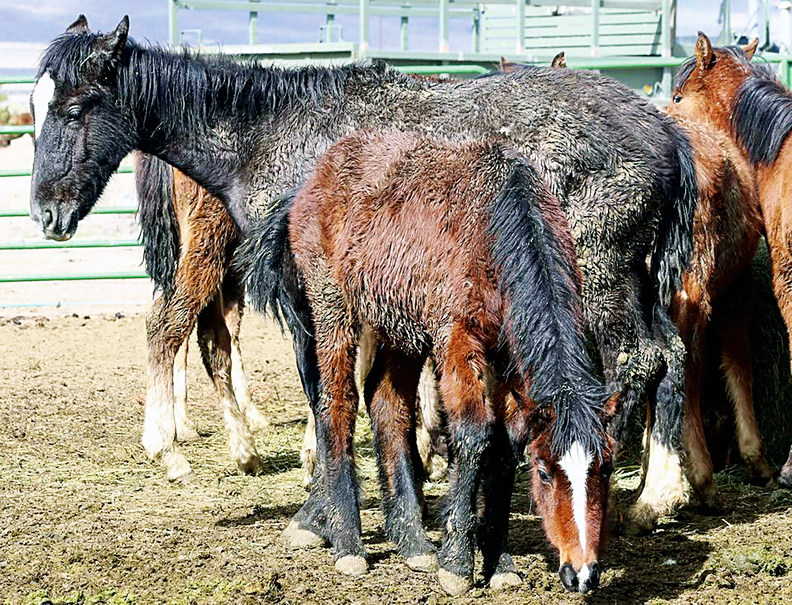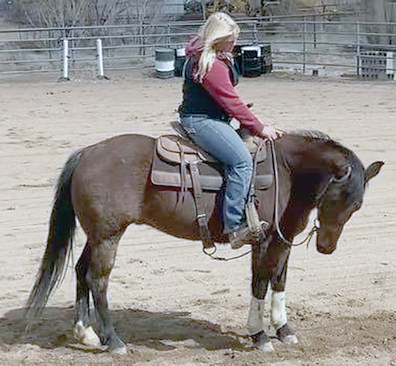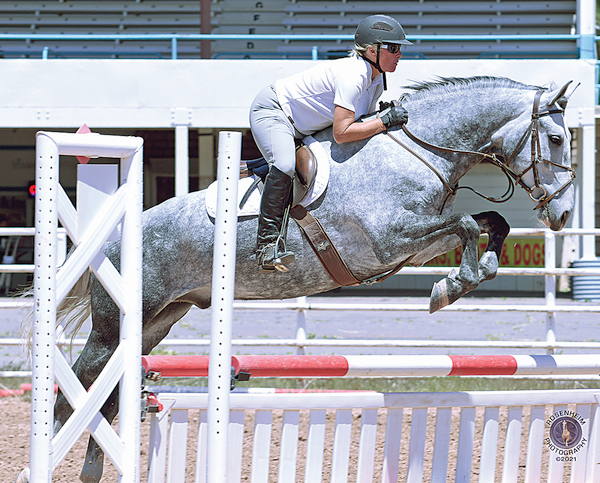By Rita Thompson-Tinsley
Gone are the days of harsh training methods and bullying problem horses into submission. Today’s trainers will tell you that true horsemanship is not cruel, it‘s clever and it‘s crafty and it‘s humane.
What started in youth as ‘horse crazy’ developed into an astute skill in horsemanship for Peg Millett. At 15, she started as a ‘stable bum’ doing odd jobs and worked her way up to riding horses. In 1970, Millett rode for trainers including Marvin Roberts, father of the famous Monty Roberts, putting solid foundations on each horse and learning the value of horsemanship. She rode horses in Europe and ran a stable in Norway.

Peg’s expanding knowledge with horses, her ability to read them, and her time as a diligent and determined Pat Parelli Natural Horsemanship student has led her to the role she has acquired working with troubled horses. Her current project, Bree, is an Arabian/Quarter Horse that came from a dressage barn.
This mare needed help, but it wasn’t completely clear just how much help until her physical condition was revealed. Three-year-old Bree had a broken rib, her sacrum was out as well as were her atlas and axis vertebrae. Bree had become a fighter during her brutal training and was in enormous pain. Peg didn’t ride Bree again until she was 4. “Bree is strong minded and quick thinking,” says Peg, “so you have to stay a step ahead.”
Now Millett is working on Bree‘s biomechanics. Her focus is on the art of getting the horse to ‘carry you’; moving on its hind quarters with collection. “With Bree, however, there is an aversion to collection due to her past training,” says Millett.

Smokey came as a true mustang from the Western Shoshone Tribal Territory confiscations. Rescued from a kill pen, he was just a foal and diagnosed with a second bout of strangles. He had five previous owners before Darlene Hayes acquired him at the age of four. She did most of his training, but because of his weak and gangly condition, she decided not to push him too hard.
This horse was so quiet that initially Darlene contemplated whether he may have mental issues. But, now that he truly has “a life and existence,” as Darlene puts it, he’s becoming more and more confident.
Early on, Smokey had issues with cinching, becoming unglued. He was panic stricken and claustrophobic. Then, at three months under saddle, Darlene rode Smokey through the Verde River trail. “He just did anything I asked of him,” she reports. “He still has so much growing ahead mentally, but he’s starting to come into his own powerful body and quick mind.”
Darlene and Smokey have developed a bonding relationship and are working on an extraordinary partnership as they participated in an eventing competition in May. “I love him so much,” says Darlene, “and I hope he can show others that the story of the Ugly Duckling is not fiction.”

Katie McAlister has been training horses before it was her profession. Growing up in Missouri, she not only rode, but found herself working with her friend’s horses. She rode on the equestrian team at her university, and worked at dude ranches and guest ranches. Then Katie took residence in Wheatland, Wyoming, where she managed a 25,000 acre ranch. Her plate was full wrangling horses, doctoring and training, fixing fences, and maintaining pastures.
Now, at Granite Mountain Stables in Prescott, McAlister manages the operations and trains both horses and riders. Personally, her super love is working with project horses, and she finds this task to be the most rewarding.
Her current project is Harley, a Quarter horse off of an Indian reservation. The biggest challenge was how reactive he got. “If I picked up contact, he would rear. If I had no contact, he would spiral and run away until he was bolting uncontrollably.” She continues, “He was reacting explosively to cues.”
Harley‘s super talented in the arena, but there‘s a lot of anxiety that surrounds that. A big help was for Katie to have him do things that wouldn‘t make him anxious, lessening the anxiety and giving him things to think about.
Katie claims that communication is the big factor that‘s usually missing, not the lack of the horse‘s athletic ability. “Horses tend to whisper a lot before they shout,” says McAlister. “They may brace in their hind quarters or in their neck. Or maybe they don’t respond quickly. If you miss the signs, things may snowball into a bigger problem,” she warns.
According to Katie McAlister, “This all takes time and patience. However, it doesn’t take a lot of time if you have the timing and the feel to do it right. Things can change drastically. So, it’s not a matter of putting a ton of time into training. It’s a matter of commitment to learning to do things right and consistently. It doesn’t take that much time to change a troubled horse‘s mind.”


